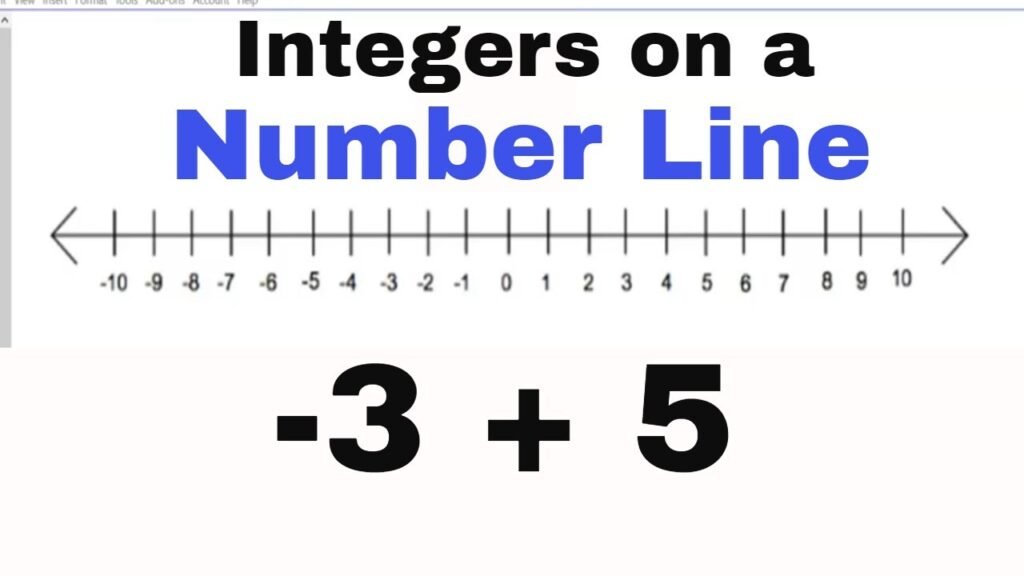A Deep Dive into Integers: The Backbone of Mathematics
Ever wondered what integers are and why they hold such an important place in mathematics? Let’s unravel the mystery in a simple, easy-to-understand way. Whether you’re a math enthusiast or just someone looking to brush up on your knowledge, this guide will walk you through everything you need to know about integers.
What Exactly Is an Integer?
Let’s start with the basics. An integer is simply a whole number. It’s not a fraction, it’s not a decimal—just a plain, simple number. The beauty of integers lies in their versatility. They can be positive, negative, or even zero. Think of them as the fundamental units in the number universe, like the atoms in the world of mathematics.
So, whenever you’re counting, measuring, or even checking your bank balance, you’re likely dealing with integers. They are straightforward and come in handy in all sorts of everyday situations.
Examples of Integers
To get a better grasp of integers, let’s take a look at some examples. Positive integers are numbers like 1, 5, and 97—numbers you probably use all the time. On the flip side, negative integers are numbers such as -5, -97, or -3,043. These are just like the positive ones but with a little minus sign in front, indicating they’re less than zero. And of course, we can’t forget zero, which stands as a unique integer—it’s neither positive nor negative.
So, if you were to list some integers, they might look something like this: -5, -1, 0, 1, 5, 8, 97, 3,043. Easy, right?
What Numbers Aren’t Considered Integers?
Now that we know what integers are, let’s talk about what they aren’t. Numbers like 1.5, -0.67, or 3/4 don’t qualify as integers. Why? Because they include fractions or decimals, which means they aren’t whole numbers. For instance, 3.14 (which might remind you of pi) isn’t an integer. Neither is 5,643.1 because of that little .1 tacked onto the end.
In simple terms, if you see a number with a decimal point or a fraction, you can be sure it’s not an integer.
The Set of Integers: An Infinite Collection
In mathematics, integers are grouped together in what’s known as a set, and this set is represented by the symbol Z. It’s just a mathematical tradition—no need to stress about why it’s Z and not something else. The set of integers is a comprehensive collection that includes all the whole numbers, both positive and negative, as well as zero. This set stretches infinitely in both directions, capturing every integer you can think of.
So, when mathematicians write out the set of integers, it looks something like this: Z = {…, -3, -2, -1, 0, 1, 2, 3, …}. The ellipses (those three dots) on either side indicate that the set continues forever without an end.
How Integers Show Up in Equations
In the world of mathematics, integers often play the role of unknowns in equations. These unknown integers are typically represented by letters like p, q, r, and s. Think of it as algebra’s way of saying, “We don’t know what number this is yet, but we’re sure it’s an integer.”
So, when you see equations with these letters, you’re likely dealing with integers waiting to be discovered.
Counting
Infinite Counting Here’s an interesting concept – counting. It’s a very nice mathematical term, which means you can list all the integers to infinity, even if the number is infinite. For example, you can write the integers as {…, -3, -2, -1, 0, 1, 2, 3, …} and the sequence continues forever. Cannot be greater than an integer. This idea is important to mathematics because it helps mathematicians understand the nature of infinity. Although the set of integers is infinite, it is always countable, which means that you can combine any integer with a natural number to make it equal to one.
Multiply integers and natural numbers
For binary, there is an interesting way to multiply integers and natural numbers (from 1 and up). For example, you can connect -1 to 1, 0 to 2, 1 to 3, etc. This dual process shows that the set of integers is larger than the set of natural numbers, even though both sets are infinite. This concept may sound boring, but it shows how big and powerful the integer world is.
Understanding Cardinality
Comparing Sizes of Finite Sets Cardinality is proportional to the size of the set, and things get better when dealing with infinite sets like the set of integers. The set of integers has the same cardinality as the set of natural numbers, i.e. it has the same cardinality as infinity. However, other combinations such as real numbers (which include fractions and decimals) and complex numbers (which include imaginary numbers) are more common. These sets have a higher cardinality than the set of integers, showing that not all infinities are equal.
What does an integer mean?
It is the foundation of algebra and algebra and serves as the building block for everything from basic math problems to complex scientific calculations. Without integers, our entire number system would fail. That’s right, a non-zero number that controls everything.Real Uses of IntegersIntegers aren’t just for math class – they play an important role in our everyday lives. Whether you’re checking the weather and it’s -5 degrees outside, balancing your budget and making sure you’re $50 in the red, or counting the steps on the treadmill. They help us understand and organize the world around us with precision and clarity.
Read More: Bulldozer Justice in India: A Clash Between Law Enforcement and Human Rights.
Conclusion
Embrace the World of Integers The nature of integers seems simple, but it is much more than that. They are the backbone of mathematics and help us understand the world in a fair and consistent way. Good, bad, or not, integers are everywhere and shape our understanding of numbers and mathematical concepts.By knowing what integers are and how they are used, you will understand one of the most important aspects of mathematics. So the next time you see an integer—whether it’s a math problem, your bank statement, or even the temperature outside—you’ll know that it’s part of the basic framework underlying our number system. all..










